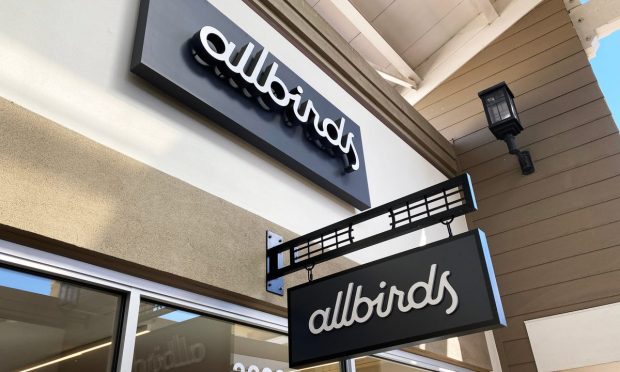Allbirds’ Omnichannel Evolution From D2C Pure-Play Can’t Happen Fast Enough

Earnings season in an inflationary climate can be a drag, as brands continue to trim outlooks and reposition for a long fall and winter of lower demand and higher prices.
It’s in virtually every sector, with apparel and fashion brands taking some of the harder hits. Eco-friendly direct-to-consumer (D2C) footwear and clothing brand Allbirds reported second-quarter 2022 earnings results Monday (Aug. 8), telling analysts that inflationary effects are wearing down shoppers.
Co-CEO and Co-Founder Joseph Zwillinger told analysts that “since our May earnings call, persistently high inflation has started to take its toll on consumers. Across our industry, elevated inventory and promotional levels have begun to impact digital and retail traffic trends.”
Allbirds customers skew toward higher incomes, he added, “hence there was a lag on the impact of inflation, but this trend became notable in the U.S. beginning in the back half of June.”
Zwillinger said Allbirds’ data revealed “changes in demand signals” that caused the brand to make Q2 moves, including tightening inventory levels, more focus on cash flow and a reduction in global corporate headcount of roughly 8%.
“These reductions in part free us up to shift resources to continue to invest in areas that are critical for long-term demand growth, including product, sourcing and brand marketing,” he said.
See also: Allbirds Joins Peloton, Etsy, Warby Parker on List of Fallen Angels
The brand is looking to its third-party distribution strategy as “a profitable marketing vehicle for our direct channel, with incremental top- and bottom-line growth over the medium term, albeit with modest impact in 2022,” Zwillinger said.
Early retail partners in the effort include Nordstrom, Zalando and SCHEELS, some of which access “geographies that we don’t expect to reach with our brick-and-mortar stores,” he said. Allbirds will also be launching with Selfridges in London this summer.
A D2C brand by design, Allbirds has moved aggressively into physical stores, opening 13 locations last year for a current 46 locations. Asked about the brick-and-mortar outlook, Zwillinger said, “even in the demand environment like we’re in today where there’s drop-off in store traffic across the industry, we can still feel confident in the long-term performance of each of these stores and the fleet overall, and of course how that haloes into the cross-channel commerce dynamic.”
Zwillinger said omnichannel customers “spend around 1.5 times more than single-channel repeat customers and now comprise approximately 15% of our repeat customer base,” adding that U.S. store sales grew almost 120% year over year, with seven new stores added in Q2.
Glasses Fog, Sneakers Go Slower
A slowdown in D2C sales injects more uncertainty into a highly volatile market.
Eyewear maker Warby Parker will report Q2 2022 earnings on Thursday (Aug. 11), and market watchers are monitoring gyrations in the stock that’s traded between $10.86 and $60.30 since its initial public offering (IPO) last September.
Still, the company said it intends to add 40 stores in 2022 to a fleet of just over 201 locations and a plan to expand its fleet to more than 900 U.S. stores over time.
Read also: Warby Parker Has Solid Business, Shaky Stock
The mightiest are feeling the sting, too, as Adidas CEO Kasper Rorsted noted in the footwear giant’s Q2 earnings release Thursday (Aug. 4) that even with a return to team sports this summer boosting results, “the macroeconomic environment, particularly in China, remains challenging. The recovery in this market is — due to continued COVID-19-related restrictions — slower than expected. And we have to take into account a potential slowdown in consumer spending in all other markets for the remainder of the year.”
For all PYMNTS retail coverage, subscribe to the daily Retail Newsletter.
